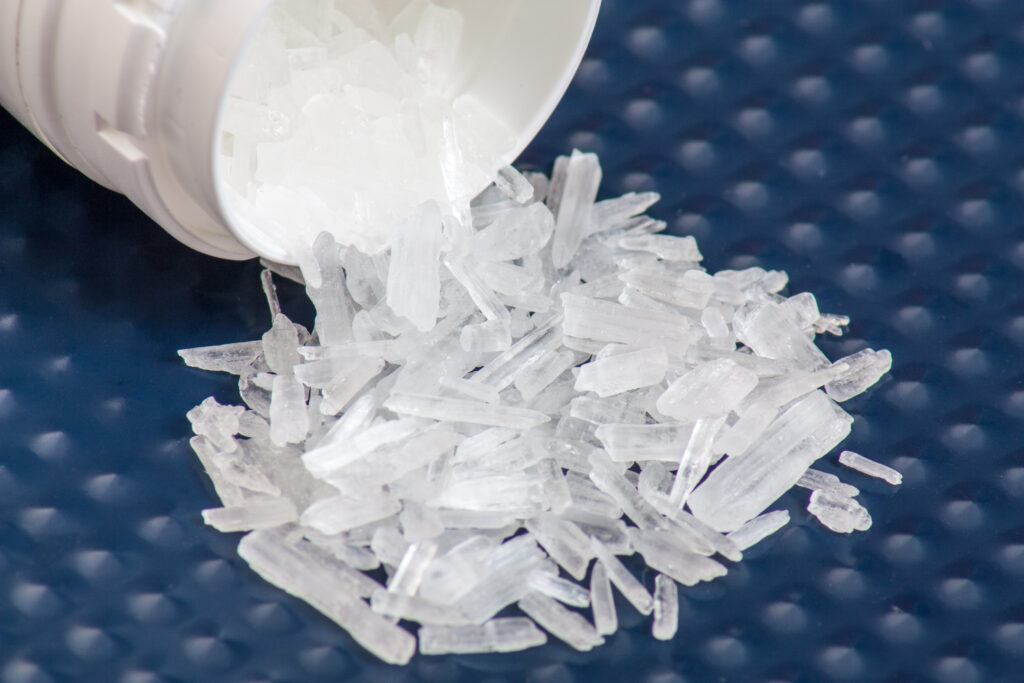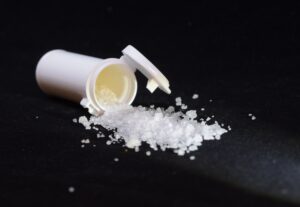If you’ve heard the term before and are still wondering “What is Tina?” then keep reading. In this article, we’ll provide an overview of what the drug Tina (crystal meth) is, including its unique name origins.
We’ll also delve into both the short-term and long-term effects of this highly addictive stimulant, discuss common treatment techniques, and point you to an LGBTQ-friendly Tina treatment center in Southern California.
Find out more about La Fuente’s Tina treatment program by calling 888.903.9898.
What is Tina?
- Tina, more commonly known as crystal meth, is a stimulant drug classified as an amphetamine
- It’s highly addictive and can lead to physical dependency after just one use
- In addition to the rock-like crystal form, it can also come as a tablet or a powder
- Meth can be smoked, snorted, swallowed, or injected
- Tina’s drug effects last 8 to 12 hours
- Other names include T, ice, speed, crank, and chalk
- Tina is a popular party drug, especially at chemsex parties among men who have sex with men
Where Does the Name Tina Come From?
Tina is an abbreviation of Christina, another slang term for crystal meth. This nickname is thought to have originated within the LGBTQ community in the 1990s and is still used today.
Although the exact source of the term is unclear, there are many reasons why members of the LGBTQ community use it. Some of these include:
-
- Cultural adoption – The LGBTQ community may have embraced the term Tina as a means of differentiating their language from conventional drug-related slang.
- Coded language – Like other slang terms for drugs, the name Tina allows members of the community to discuss it privately and without judgment.
- Belonging – Adopting a unique term builds a sense of community identity by reinforcing connections between group members.
Side Effects of Tina
Tina is a highly addictive stimulant drug that impacts the nervous system. Whether smoked, snorted, or injected, it triggers a rapid release of neurotransmitters like dopamine, serotonin, and norepinephrine. These chemicals create intense, short-lived sensations that last 8 to 12 hours. While the immediate effects may be pleasurable, long-term Tina use can seriously affect both the physical and mental well-being of users.
Short-term side effects
- Increased alertness – Using Tina creates sensations of boundless energy, increased focus, alertness, and a decreased need for sleep.
- Euphoria – Users feel confident, have clarity, and experience a spike in libido.
- Hyperactivity – Rapid speech, excessive movement, and impulsivity are all common amongst Tina users.
- Decreased sensitivity to pain – Tina alters neurotransmitter levels in the brain, leading to decreased pain levels. Despite this perception, the risk of injury and bodily harm remains the same.
- Decreased appetite – Like other stimulants, Tina suppresses the appetite and leads to drastic weight loss.
- Increased heart rate – As a stimulant, Tina elevates heart rate, blood pressure, and respiration.
- Elevated body temperature – Crystal meth interferes with the body’s thermoregulation system, promotes physical activity, and increases metabolism, all of which increase body temperature.
- Irritability and violence – Many users exhibit signs of agitation, restlessness, and aggression following crystal meth use.
Long-term side effects
- Cognitive impairment – Memory loss, impaired judgment, and difficulty concentrating are just a few of the effects meth has on cognition.
- Poor mental health – Long-term meth use is closely correlated with anxiety, hallucinations, and paranoia.
- Addiction – Meth is highly addictive. Repeated use can lead to physical and psychological dependence.
- Dental issues – Commonly referred to as meth mouth, users may experience tooth decay and gum disease.
- Sores – Users often develop skin sores as a result of scratching at non-existent crank bugs.
- Weight loss – Tina is an appetite suppressant. Chronic use can lead to malnutrition and weight loss.
- Cardiovascular problems – Meth users are at an increased risk for heart attack and stroke.
- Dopamine deficiency – Some users lose the ability to experience natural pleasure due to a loss of dopamine-producing cells in the brain.
- Overdose and death – Taking large or repeated doses of meth causes hyperthermia, seizures, cardiac arrest, and ultimately, death.
How to Treat Tina Addiction
Tina is one of the most addictive drugs on the planet. As such, aggressive professional treatment is essential to treat addiction. Meth treatment is often divided into three components: detox and withdrawal, mental health treatment, and life skills training.
Detox and withdrawal
This phase is all about purging Tina from the body and should be done in a professional setting to ensure the client’s safety. The initial detox takes 1 to 3 days, but it can take up to a month for all of the physical withdrawal symptoms to dissipate. Some of these symptoms include cravings, fatigue, nausea, and emotional outbursts.
Mental health treatment
After the initial detoxification period, clients participate in a range of therapeutic activities to get to the root of their addiction. Depending on the treatment center and the client’s needs, this could include a combination of individual therapy (cognitive behavioral, motivational enhancement therapy, or contingency management), group therapy, and family therapy.
In addition to conventional mental health treatment, clients may also engage in holistic practices such as meditation, yoga, and art therapy.
Life skills training
While undergoing mental health treatment, clients participate in support groups and acquire vital life skills like coping strategies, communication, emotional regulation, and goal setting. Additionally, they work on creating an aftercare plan to support their ongoing recovery.
Get Help for Tina Addiction at La Fuente Hollywood Treatment Center
Given Tina’s highly addictive nature and the intense withdrawal symptoms it induces, we strongly recommend seeking professional care. Our LGBTQ rehab center in Los Angeles provides comprehensive support, including inpatient detox, recovery, partial hospitalization (PHP), and intensive outpatient (IOP) programs to help you overcome Tina addiction. We also offer alumni programs and sober living options to facilitate a smooth transition back into everyday life after completing treatment.
Learn more about La Fuente’s programs by calling 888.903.9898.




